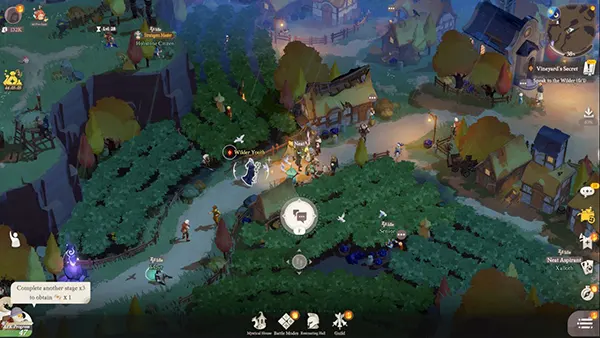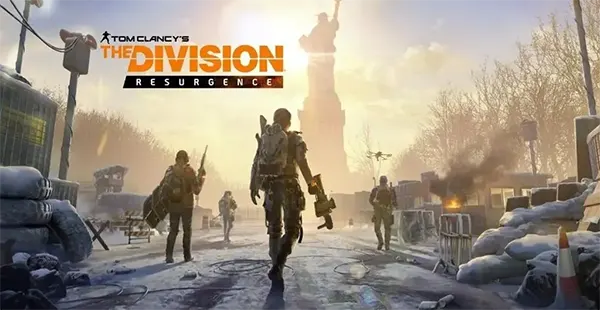
“AFK Journey” is not just another mobile RPG; it’s a comprehensive evolution of the idle role-playing genre. With immersive tactical combat, a charming visual world, and rewarding progression mechanics, this title from Farlight Games and Lilith Games redefines what it means to go idle. In 2025, this game stands out by merging thoughtful game design with strategic depth—offering both casual engagement and layered complexity for those who seek it.
One of the most distinctive features of “AFK Journey” is its transition from traditional idle mechanics to turn-based tactical combat on a grid-based battlefield. Players are no longer passive observers; instead, they control hero placements, movement, and skills in tactical, wave-based encounters. This reimagining adds fresh intensity and interactivity while preserving the automatic systems beloved by idle fans.
Unlike older AFK titles, the game allows for more deliberate planning. Players can anticipate enemy moves, chain character abilities, and create synergy between classes. This elevates the tactical gameplay to something closer to Fire Emblem or Final Fantasy Tactics, all while preserving its idle core between battles for a low-pressure experience.
The battle system also features distinct environmental modifiers. Weather effects, terrain types, and map obstacles can all impact strategic decision-making. This brings depth that was largely missing from earlier idle games, ensuring “AFK Journey” doesn’t feel like a re-skin of its predecessors.
“AFK Journey” features over 50 characters at launch, divided into multiple factions, each with its own lore, strengths, and playstyle. This roster encourages experimentation and diverse team compositions. Players are rewarded for exploring synergies, rather than sticking to a singular overpowered build.
Each character belongs to one of several classes—Tanks, Mages, Archers, Rogues, and Support—adding a classic RPG feel. Skill trees and passive upgrades offer nuanced ways to tailor each hero. There’s real depth here for players who enjoy theorycrafting and optimising line-ups.
Moreover, progression systems like Resonating Crystal and Stargazing Room return with improvements, making it easier for newcomers to catch up while still rewarding long-term players. The game balances accessibility with layered advancement.
The game’s aesthetic combines Western fairy tale visuals with pastel-toned fantasy. Built in Unreal Engine 4, the map is no longer a static UI screen but an explorable 3D overworld filled with environmental storytelling and puzzle-like map interactions.
Players can interact with the world in ways not seen in other idle RPGs. Hidden chests, NPCs with quest chains, mini-puzzles, and day/night cycles add variety and immersion. This makes the game feel more alive and personal, rather than a spreadsheet with animations.
Zones are thematically rich—from enchanted forests to crumbling ruins—drawing inspiration from titles like Zelda: Breath of the Wild and Genshin Impact. However, “AFK Journey” avoids overwhelming players with fast-paced action. It respects the mobile format while delivering visual fidelity and worldbuilding uncommon in the genre.
What truly differentiates “AFK Journey” is how it intertwines gameplay with storytelling. Characters are not just stats and abilities; they are embedded in a shared narrative that unfolds through missions, cutscenes, and environmental clues.
The lore is structured around the six factions: Lightbearers, Graveborn, Wilders, Maulers, Celestials, and Hypogeans. Each faction has a clear narrative arc and ideological position in the game world, which influences their campaign involvement and power struggles.
This approach allows players to connect more emotionally with their units. Even idle moments feel more grounded when you understand the motivations and conflicts of your team members. It’s a smart move to bridge casual gaming and deep narrative design.

“AFK Journey” takes a balanced approach to monetisation. It follows a free-to-play model with in-app purchases but avoids aggressive pay-to-win mechanics. The in-game economy rewards daily engagement, smart use of resources, and strategic event participation.
Regular seasonal events introduce limited-time dungeons, unique cosmetic rewards, and mini-games that expand the experience without disrupting progression. Importantly, premium purchases are mostly quality-of-life improvements and not mandatory for success.
The community aspect is also strong. Players can join guilds, compete in arena rankings, and participate in global boss events. There’s a real sense of shared adventure—one that keeps long-time fans of AFK Arena engaged while bringing in new players through robust social mechanics.
In a year saturated with gacha-heavy, action-first RPGs, “AFK Journey” offers a refreshing balance between simplicity and depth. It respects players’ time while rewarding strategic thinking and immersion. This balance is rare and increasingly appreciated by modern mobile gamers.
The game’s developers have shown a clear roadmap for 2025, including additional story chapters, new hero classes, and optimisation patches for older devices. This shows commitment to longevity—a crucial factor in evaluating mobile games in today’s crowded market.
Ultimately, “AFK Journey” does not seek to reinvent mobile RPGs entirely. Rather, it evolves the idle genre with sincerity and focus, carving its place as one of the most compelling tactical RPGs of the year.

Over the last two years, virtual reality gaming has shifted …

The Division Resurgence marks a significant milestone for Ubisoft, extending …